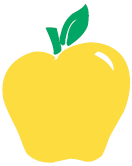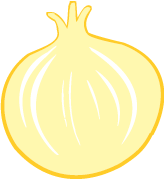Add Some Color (and Nutrition) to Your Meals (FN2017, May 2021)
Fruits and vegetables are an important part of a healthful diet. They provide fiber, vitamins such as vitamins A and C, and minerals such as potassium, to maintain health. Eating enough fruits and vegetables may help prevent chronic diseases such as heart disease, Type II diabetes and cancer.
Aim to have a variety of fruits and vegetables in your daily diet because different colors of fruits and vegetables provide different nutrients. Eating more low-calorie vegetables and fruits may help you reduce your calorie intake, which may help with weight management.
This pocket guide provides nutrition tips and recipes to add color to your meals.
See www.ag.ndsu.edu/food for more information.
How much fruits and vegetables should I aim to eat daily?
Find your daily recommendation in Table 1. Most adults, for example, need 4 to 5 cups of fruits and vegetables daily. Enjoy fruits and vegetables fresh, frozen, canned, dried or 100% juice. They all count toward the total. When possible, consume unpeeled fruits or vegetables (such as apples) to maximize the health benefits.
Table 1. Daily recommendations for fruits and vegetables based on age.
|
Age |
Fruit (cups) |
Vegetables (cups) |
|
|
Toddlers |
12 - 23 mo. |
½ - 1 |
b - 1 |
|
Children |
2 - 4 yr. |
1 - 1½ |
1 - 2 |
|
5 - 8 yr. |
1 - 2 |
1½ - 2½ |
|
|
Girls |
9 - 13 yr. |
1½ - 2 |
1½ - 3 |
|
14 - 18 yr. |
1½ - 2 |
2½ - 3 |
|
|
Boys |
9 - 13 yr. |
1½ - 2 |
2 - 3½ |
|
14 - 18 yr. |
2 - 2½ |
2½ - 4 |
|
|
Women |
19 - 30 yr. |
1½ - 2 |
2½ - 3 |
|
31 - 59 yr. |
1½ - 2 |
2 - 3 |
|
|
60+ yr |
1½ - 2 |
2 - 3 |
|
|
Men |
19 - 30 yr. |
2 - 2½ |
3 - 4 |
|
31 - 59 yr. |
2 - 2½ |
3 - 4 |
|
|
60+ yr |
2 |
2½ - 3½ |
Source: Choosemyplate.gov based on the 2020-2025 U.S. Dietary Guidelines for Americans
Follow These Food Safety Tips
Improperly handled fruits and vegetables can become contaminated with Salmonella, E. coli and other “germs” that could lead to foodborne illnesses. Follow these tips to keep produce safe from store to home:
- Wash your hands for 20 seconds before preparing produce.
- Rinse produce with running water, using a brush if necessary but no soap.
- Remove outer leaves of lettuce and cabbage.
- Avoid cross-contamination. Use separate cutting boards for produce and meat. Wash cutting boards in soapy water and rinse thoroughly.
- For extra protection, sanitize the cutting boards after use. To sanitize, mix 1 tablespoon of unscented chlorine bleach in a gallon of water and soak the cutting board for several minutes, then rinse with water and air-dry or pat with clean paper towels.
- Note: Most plastic, glass, nonporous acrylic and solid wood cutting boards can be washed in a dishwasher. However, follow the manufacturers’ directions for care and cleaning of cutting boards.
- Keep cut produce cold. Serve cut produce nested in containers over ice.
- Store cut produce below 40 F.
Enjoy More Vegetables
- Try different food preparation techniques. Cook fresh or frozen vegetables in the microwave or use a multifunction cooker or air-fryer. Grill vegetables or make chicken or steak and vegetable kabobs.
- Rinse and cut a batch of bell peppers, carrots or broccoli. Prepackage them to use when time is limited. You can enjoy them on a salad, with a hummus dip or in a veggie wrap.
- Brighten your plate with vegetables that are red, orange or dark green.
- Check the freezer aisle. Frozen vegetables are quick and easy to use and are just as nutritious as fresh veggies. Look for frozen vegetables without added sauces, gravies, butter or cream.
- Stock up on veggies. Keep on hand canned tomatoes, kidney beans, garbanzo beans, mushrooms and beets. Select those labeled as “reduced sodium,” “low sodium” or “no salt added.”
- Brighten your salad by using colorful vegetables such as black beans, sliced red bell peppers, shredded radishes, chopped red cabbage, carrots or watercress.
- Try tomato, butternut squash or a cold garden vegetable soup (gazpacho). Make your own soups with a low-sodium broth and your favorite vegetables.
- Enjoy vegetables while you’re dining out. When ordering, ask for an extra side of vegetables
or side salad instead of the typical fried side dish. Ask for toppings and dressings on the side. - Buy vegetables that are in season for maximum flavor at a lower cost. Check your local supermarket specials for the best in-season buys or visit your local farmers market.
- Choose a new vegetable that you’ve never tried.
Enjoy More Fruits
- Keep a bowl of whole fruit on the table, counter or in the refrigerator.
- Buy fresh fruits in season when they may be less expensive and at their peak flavor. Add fruits to sweeten a recipe.
- Buy a variety of fruits that are dried, frozen and canned (in water or 100% juice) as well as fresh so you always have a supply on hand.
- Make most of your choices whole or cut-up fruit, rather than juice, to reap the benefits that dietary fiber provides.
- Set a good example for children by eating fruit every day with meals or as snacks.
- Include fruit at breakfast. Top your cereal with strawberries or other fruit, add blueberries to pancakes, drink 100% fruit juice. Mix yogurt with fresh or frozen fruit.
- At lunch, pack a whole, rinsed fruit to enjoy or choose fruits from a salad bar.
- At dinner, add crushed pineapple to coleslaw or include dried cranberries or grapes in a tossed salad.
- Snack on fresh or dried fruits. Dried fruits make great snacks that are easy to carry and store well.
Preserve the Best, Eat the Rest
We have many options to preserve fruits and vegetables, including freezing, drying, fermenting, pickling, pressure canning or water-bath canning and making jams and jellies. You can learn more about all of these topics at www.ag.ndsu.edu/food.
Key to Abbreviations
tsp. = teaspoon c. = cup
Tbsp. = tablespoon oz. = ounce
mg = milligrams g = grams
Red

Examples include red grapes, strawberries, raspberries, tomatoes, apples, watermelon, red peppers and beets.
Nutrition and Health
Anthocyanins are plant pigments that function as powerful antioxidants. Fruits and vegetables rich in anthocyanins include strawberries, raspberries, red grapes and red cabbage. Some red fruits and vegetables get their color from a natural pigment called lycopene. Fruits and vegetables rich in lycopene include tomatoes, watermelon, red peppers and grapefruit.
Lycopene in tomatoes and other foods may reduce the risk of prostate, lung and stomach cancer.
What counts as 1 cup? 1 cup chopped, cooked, cut; one small apple; one bell pepper; one large tomato; eight large strawberries; 12 baby carrots; one small wedge or slice of watermelon (1 inch thick).

Mini Tomato and Chicken Pizzas With BBQ Drizzle
1 Tbsp. olive oil
2 large tomatoes, cut into ½-inch-thick slices
½ c. shredded rotisserie chicken (or shredded grilled chicken)
¼ c. shredded mozzarella cheese
¼ c. shredded smoked Gouda cheese
¼ c. red onion, cut into thin strips
¼ c. bell pepper, chopped
6 Tbsp. BBQ sauce
Heat oven to 375 F and lightly coat the baking sheet with olive oil. Place the sliced tomatoes on the baking sheet. Combine chicken, cheeses, onion and bell pepper in a bowl, then evenly coat tomato slices with the mixture. Bake for eight to 12 minutes or until the cheese turns golden brown.
Remove the oven and garnish with BBQ sauce.
Makes six servings. Each serving (one tomato slice) has 120 calories, 6 g fat, 6 g protein, 11g carbohydrate, 1g fiber and 220 mg sodium.
Orange
Examples include squash, pumpkin, oranges, sweet potatoes, carrots and cantaloupe.

Nutrition and Health
Beta-carotene in sweet potatoes, pumpkins and carrots reduces the risk of cancer and heart disease, increases immune system function and helps maintain good eyesight. Our bodies convert beta carotene to vitamin A. This vitamin helps maintain skin and eye health.
What counts as 1 cup? One large sweet potato; 1 cup sliced, diced or mashed; one large orange; 12 baby carrots; one large bell pepper.

Savory Pumpkin Soup
1 Tbsp. olive oil
1 medium red onion, chopped
3 garlic cloves, minced
2 Tbsp. chopped sage (about 10 leaves)
4 c. low-sodium vegetable broth
1 (15-oz.) can navy beans
1 (15-oz.) can pumpkin puree (not pumpkin pie filling)
1 tsp. turmeric
½ tsp. nutmeg
½ tsp. salt
1/8 tsp. pepper
Dried cranberries, pomegranate seeds and/or sage for garnish (optional)
In a large pot, heat olive oil over medium heat. Add onion and cook for five to seven minutes, until translucent. Add garlic and sage to the pot and cook for another minute. Add vegetable broth, pumpkin, beans, turmeric, nutmeg, salt and pepper; stir to combine. Bring to a simmer. Allow the soup to cool before transferring in small portions to a blender to puree. You may use an immersion blender. Transfer the soup back into the pot and let cook on medium-low heat for five to 10 minutes. Add salt and pepper to taste. Garnish as desired.
Makes six (1 c.) servings. Each serving has 130 calories, 2.5 g fat, 5 g protein, 21 g carbohydrate, 6 g fiber and 300 mg sodium.
Yellow/gold
Examples include sweet corn, yellow squash, yellow carrots, yellow apples, yellow watermelon, yellow tomatoes, yellow beets, yellow-skinned pears and pineapple.

Nutrition and Health
Corn provides natural carotenoid pigments, lutein and zeaxanthin, which play a role in maintaining eye health.
What counts as 1 cup? 1 cup diced, raw or cooked yellow fruit or vegetables; one small ear of corn; one medium pear; one small yellow apple.

Corn on the Cob With Bacon and Buffalo Sauce
4 ears corn, husked and rinsed
¼ c. (½ stick) unsalted butter, melted
4 slices bacon, cooked, finely chopped (optional)
2 Tbsp. buffalo sauce
Boil corn for about 10 minutes, or place the corn on a grill at high heat and cook for 10 to 12 minutes while turning and rotating.
While the corn is cooking, make the buffalo sauce by combining the melted butter and buffalo sauce. After the corn is cooked, let cool and slather with the sauce mixture. Garnish with finely chopped bacon.
Makes four servings. Each serving (one ear of corn) has 210 calories, 16 g fat, 5 g protein, 14 g carbohydrate, 0 g fiber and 260 mg sodium.
Green
Examples include leafy greens, cabbage, snap beans, green apples, Brussels sprouts, broccoli, asparagus, herbs, cucumbers, green onions, sugar snap peas and zucchini.

Nutrition and Health
Lutein is found in leafy greens such as spinach and romaine lettuce. It reduces the risk of cataracts and macular degeneration, which can lead to blindness. Indoles, which are naturally found in broccoli, cauliflower, cabbage and other cruciferous vegetables, help protect against breast cancer. Asparagus contains folate, vitamins A, C, E and K, and potassium. Antioxidants reduce inflammation, and folate is crucial for cell growth.
What counts as 1 cup? 2 cups raw leafy greens (such as spinach or lettuce); 1 cup cooked, diced or chopped greens; 1 cup shredded cabbage; one large green bell pepper; 1 cup raw or sliced cucumber; one small green apple.

Snappy Green Beans With Basil Dip
½ lb. fresh green beans, washed and stemmed
1/3 c. low-fat mayonnaise or salad dressing
2 Tbsp. low-fat milk
1 tsp. onion powder
1 Tbsp. fresh basil, chopped (or substitute ½ to 1 tsp. dried basil, to taste)
Wash beans well and snap off ends. Mix together all of the ingredients for the dip, leaving out the green beans for dipping. Keep everything refrigerated until just before serving time.
Makes four servings. Each serving has 35 calories, 0.5 g fat, 1 g protein, 7 g carbohydrate, 3 g fiber and 160 mg sodium.
Blue and Purple
Examples include blackberries, plums, purple cabbage, raisins, purple carrots, purple peppers, purple grapes, purple asparagus, purple-fleshed potatoes and blueberries.
Nutrition and Health
Anthocyanins in blueberries, grapes and raisins act as powerful antioxidants that protect cells from damage. These antioxidants
may reduce the risk of cancer and heart disease.
What counts as 1 cup? 1 cup fresh or frozen berries, three medium purple plums, 1 cup whole or cut grapes, ½ cup raisins, 1 cup shredded purple cabbage, one medium purple potato, 1 cup mashed purple potatoes.

Blueberry Power Muffins
2 c. all-purpose flour
1 c. oats, quick or regular
2/3 c. sugar
1 tsp. baking powder
1 tsp. baking soda
½ tsp. salt
1½ c. honey nonfat Greek yogurt
2 large eggs, lightly beaten
4 Tbsp. unsalted butter, melted and slightly cooled
1 tsp. vanilla extract
1 c. fresh blueberries
Heat oven to 350 F. Coat muffin tin with cooking spray or liners. Combine flour, oats, sugar, baking powder, baking soda and salt in a bowl. Combine yogurt, eggs, butter and vanilla in a second bowl. Fold yogurt mixture into dry mixture; stir to combine completely. Gently fold in blueberries. Spoon into muffin tins. Bake until the top is golden and a toothpick inserted in the center comes out clean, approximately 20 to 25 minutes.
Makes 16 servings. Each serving has 170 calories, 4.5 g fat, 4 g protein, 29 g carbohydrate, 1 g fiber and 210 mg sodium.

Purple Cabbage Salad
½ c. apple cider vinegar
3 Tbsp. sugar (or 1½ Tbsp. honey)
1/3 c. canola oil or olive oil
2 tsp. celery seed
4 c purple cabbage, coarsely chopped
1 c. apple, unpeeled and chopped
½ c. carrots, grated
½ c. purple/red onion, chopped
1 c. dried cranberries
Black pepper to taste
Prepare the dressing by mixing vinegar and sugar until the sugar dissolves. Add oil and celery seed and mix well. Set aside.
Rinse vegetables and fruit; prepare as described. Add raisins or dried cranberries.
Add vinegar mixture and toss until well coated. Add pepper if desired. Refrigerate until serving.
Makes 10 servings. Each serving has 210 calories, 10 g fat, 1 g protein, 32 g carbohydrate, 3 g fiber and 15 mg sodium.
White
Examples include onions, garlic, potatoes, cauliflower, mushrooms, white beans and turnips.

Nutrition and Health
Onions provide vitamin C, phosphorus and potassium. Potatoes are rich in potassium and potato skin is rich in fiber. White vegetables are rich in antioxidants that may have a protective role against cancer. Allicin, a compound found in garlic and onions, may help maintain healthy cholesterol and blood pressure levels. It also may reduce the risk of stomach cancer and heart disease.
What counts as 1 cup? One medium potato, one medium onion, 1 cup cauliflower florets (raw or cooked), 1 cup raw or cooked mushrooms.

Roasted Parmesan Garlic Potatoes
2 large red potatoes
1 large russet potato
1 large sweet potato
1 medium red onion
2 Tbsp. olive oil
2 Tbsp. unsalted butter, melted
5 cloves garlic, minced
1 tsp. dried thyme
½ tsp. dried oregano
½ tsp. dried basil
1/3 c. freshly grated Parmesan cheese
1/8 tsp. salt
1/8 tsp. pepper
2 Tbsp. parsley leaves, chopped
Preheat the oven to 425 F. Wash and slice potatoes and onion into ¼-inch slices.
In a round pie plate, line the potatoes and onion alternately. In a bowl, combine melted butter, olive oil, herbs, salt, pepper, Parmesan and minced garlic. Drizzle the mixture over the potato and onion round, brushing the herbs and Parmesan over the top. Place in the oven for one hour or until fork-tender with crispy edges. Serve warm with a little fresh parsley and dash of Parmesan.
Makes eight servings. Each serving has 160 calories, 7 g fat, 3 g protein, 21 g carbohydrate, 3 g fiber and 120 mg sodium.
For more information, please visit the Field to Fork website at www.ag.ndsu.edu/fieldtofork.
The author thanks Alliana Houfek and Johanna Weber, NDSU dietetic interns, for their help in compiling information.
Funding for this publication was made possible by the U.S. Department of Agriculture’s Agricultural Marketing Service through grant AM190100XXXXG028. Its contents are solely the responsibility of the authors and do not necessarily represent the official views of the U.S. Department of Agriculture.

